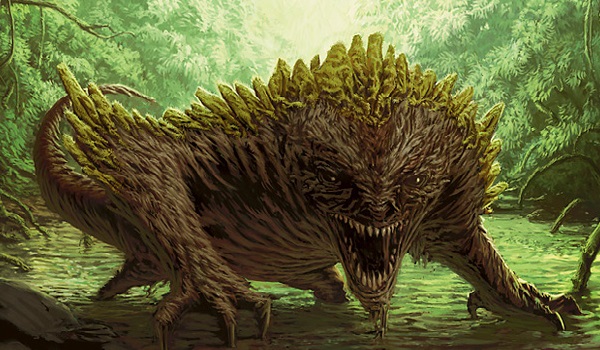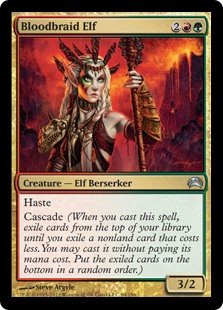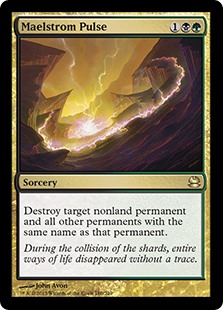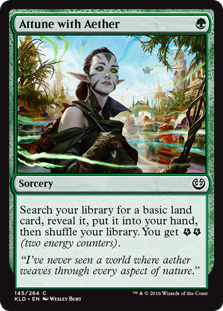Are you a Quiet Speculation member?
If not, now is a perfect time to join up! Our powerful tools, breaking-news analysis, and exclusive Discord channel will make sure you stay up to date and ahead of the curve.
It has come to this. Time to start rolling out the results of the latest banned card test. Conducting this test has been weird for me. Having a hard deadline was actually a blessing as it helped discipline the testing period and we got done much faster than expected. However, this wasn't a fun experience for me or my team. Unlike the cards we've done previously, we all had extensive history with Bloodbraid Elf that hung over the whole experience. Old-timers can probably see where I'm going, but the rest of you will need to wait for the end.

We have two items on the agenda today. First, I need to reveal and explain our testing decks and the gauntlet. There should be no surprises here. Next, I will discuss the qualitative results. This is the "soft" data gathered during the experiment—things that cannot be numerically quantified. Everything we thought and experienced during testing is part of the testing and a result, and so needs to be reported. Furthermore, when players discuss the impact of a potential unban, it will be what most focus on, so we should be prepared.
The Test Decks
After my failed attempt to make a new, interesting deck for testing, I didn't have time to come up with Jund lists on my own. Normally, I spend some time looking through deck lists, aggregating their numbers and developing a statistically average decklist to use. I'm not interested in the best list; I'm always just looking for the most representative one. The time constraint meant I got to take an easier option. I asked my resident Jund expert if we could just use his list. He said yes, so here is what he was running back in November. For the curious, he's codename "Elliott" from a previous article. He doesn't want to be internet famous so I won't use his real name.
Jund, by Elliott (control deck)
In addition to the list, he also gave me a matchup and sideboarding guide. I will be posting that (kinda) next week as we go through the results, but I want to stress right now that this was all based on how things worked back in November. Please don't take any of this for actual strategic advice; I just play a Jund expert for this column.
Since we were using Elliott's list, I asked him how to rebuild with Bloodbraid Elf. At almost the same moment I hit send, his email with exactly that arrived.
Bloody Jund, by Elliott (test deck)
This deck was not designed with the testing in mind, I didn't even tell Elliott what decks would be in the gauntlet. He assured me that this is the deck he would have played if Bloodbraid Elf was legal when we started testing. His reasoning for the changes was to make every cascade as good as possible. Therefore, the more situational Fatal Push and Inquistion of Kozilek are shaved for Lightning Bolt and Thoughtseize. The sideboard was also changed slightly for the same reason. He reasoned that Abrupt Decay isn't great, but is necessary and makes for a terrible sideboard card, so the more expensive Maelstrom Pulse was cut.
In our previous testing, we'd found that Grim Flayer was great alongside Bloodbraid by setting up the cascade, but he insisted on not playing any. Kolaghan's Command was also as good as you'd think, so I was surprised that there weren't more. When asked, my expert explained that Flayer is not well positioned compared to Dark Confidant right now. These days, card advantage is critical to Jund like never before, and Bob is the superior choice for that job. Command is very good at grinding, but he didn't think that would come up enough to warrant finding space.
The Test Gauntlet
As always, the five gauntlet decks were chosen to represent as broad a metagame as possible. Fortunately, Tier 1 is filled with diverse decks, which made the choices obvious and easy. We picked the obvious choices for aggro, control, combo, big mana, and Death's Shadow. The lists were built according to what was "stock" back in early November. Our list actually looks pretty similar to the 2012 metagame, to the point that I considered including Counters Company as a Birthing Pod analogue. Then it was pointed out that Company isn't doing that well compared to the other decks anymore, so it got left behind.
Affinity, test deck
We were never not going to test against Gx Tron, even though extenuating circumstances meant that we wouldn't use Eldrazi Tron. My Tron player hates Eldrazi Tron and insists that Gx Tron is better. I don't know if she's actually right, but I do know she had been struggling for weeks with Eldrazi Tron when I started putting the team together. Gx is also back in force in my local meta, while the Eldrazi have vanished. Your results may vary, but I believed her then and still do. I was tempted to run GR Tron for old time's sake, but BG had more wins in October.
BG Tron, test deck
I planned to just run the list from the Preordain test, but I was told it was badly out of date. The differences look pretty negligible to me, but I'm not arguing with the Boulder Combo Cabal.
Gifts Storm, test deck
Grixis Death's Shadow, test deck
Jeskai Tempo, test deck
With the gauntlet set, the only thing left to do was the actual, tedious grinding work of playing Magic for data. Let's talk about the unquantifiable data.
The Qualitative Results
The hard data will make its own argument about Bloodbraid next week. But also important is the soft data: What did it feel like playing with and against Bloodbraid? Did it improve the experience? That data matters because numbers cannot express player enjoyment or fun. Regardless of what the data show next week, the overriding concern for Wizards is whether an unban will make the game more or less fun. At least that's the impression their banning explanations give me.
Team Background
In the interest of full disclosure, I need to explain something about my team. I've known most  of my team since we were undergrads. We've all been playing since we were kids. Everyone's a Spike, and all of us have at least a couple Pro Points in our history. We're "longbearded grinders," extending back to 2009 when Bloodbraid Jund ruled Standard.
of my team since we were undergrads. We've all been playing since we were kids. Everyone's a Spike, and all of us have at least a couple Pro Points in our history. We're "longbearded grinders," extending back to 2009 when Bloodbraid Jund ruled Standard.
And that's why none of us actually like the card. Even my Jund expert dislikes it now, though he admits to enjoying what it does for him (more on this later). We all dealt with the frustration of a Jund-dominated Standard, felt it again in Extended, again briefly in Legacy, and then finally in Modern. This is not the typical experience for most players, so you may have opinions that are wildly different. We're just coming to this from a long history of playing with and against Bloodbraid Elf. One peppered more with nausea than nostalgia.
More of the Same
It's really tempting to just let this section's title speak for itself. My team and I disliked this test because our experience during the test was identical to our experiences pre-January 2013: spin the wheel of git wrekt. Who's "getting wrekt" and to what degree aren't yet known, but somebody is going to be unhappy. You probably aren't getting wrekt; you get a spell off the top of your deck and play it for free alongside a 3/2 with haste. Having that make you worse off can happen, though in those circumstances you were dead anyway. That's more I got wrekt because you didn't git wrekt. Your opponent is almost certainly in for a very frustrating day, though.
Back in Standard, Elf cascades always seemed to be the perfect card for the situation, whether they were Blightning, Sprouting Thrinax, or Maelstrom Pulse. Even when they were only Lightning Bolt, Putrid Leech, or Terminate, the tempo and card advantage swing was enormous. When you were behind, no one card did more to catch back up.  When ahead, nothing went further to ensuring you stayed there than Bloodbraid Elf. And that was as true during our testing as it was back in 2012.
When ahead, nothing went further to ensuring you stayed there than Bloodbraid Elf. And that was as true during our testing as it was back in 2012.
There are few things more frustrating than losing to random luck, and that is what it has always felt like to play against cascade. There's no play to it or a sense of in-game skill. It's just variance rewarding you for playing Bloodbraid Elf. It feels great to actually play the card, and I was certainly gleeful to get rewarded by "fate" (or rather, by building a deck with Elf in mind). However, I remember how bad it felt to play against the card. If you think players whine about variance and lucksacking these days, you didn't know me back in 2010. I could have written a full textbook on the subject. When I surveyed my team about playing against Bloodbraid, the unanimous response was "It's just as I remembered it." For good or ill, that's my qualitative result.
The Virtual Advantage
The other thing is that even when you do "miss" on your cascade, you're not really unhappy. You still have a 3/2 haste creature. But there's also something more  subtle going on because that bad cascade improved your next draw step. By playing Bloodbraid Elf, you don't just get the actual card advantage from casting the second card, but you can get some virtual card advantage. My average cascade during testing revealed two cards. This meant that I got a land I really didn't need off the top of my deck and then cast whatever spell I found. Even if the spell was just dead, it was a dead spell I didn't draw, making my next draw step better by two fewer dead cards on top of my deck. The actual advantage this provides in-game is very hard to quantify or even perceive, but certainly adds up over a longer game. For this reason, I was never sad to cast Bloodbraid. Even if I didn't hit well, I was better off than I would have been otherwise. Bloodbraid is very insidious because this is arguably its greatest power.
subtle going on because that bad cascade improved your next draw step. By playing Bloodbraid Elf, you don't just get the actual card advantage from casting the second card, but you can get some virtual card advantage. My average cascade during testing revealed two cards. This meant that I got a land I really didn't need off the top of my deck and then cast whatever spell I found. Even if the spell was just dead, it was a dead spell I didn't draw, making my next draw step better by two fewer dead cards on top of my deck. The actual advantage this provides in-game is very hard to quantify or even perceive, but certainly adds up over a longer game. For this reason, I was never sad to cast Bloodbraid. Even if I didn't hit well, I was better off than I would have been otherwise. Bloodbraid is very insidious because this is arguably its greatest power.
What Does it Mean?
Irrespective of the hard data, unbanning Bloodbraid will be a polarizing move. Jund players will rejoice and really enjoy having the card. Everyone else, not so much. Players hate losing to variance, and Bloodbraid Elf appears to be weaponized variance. That isn't true, but it does seem that way to outside observation. Rather, Bloodbraid rewards you for building the deck around it, maximizing the potential of each cascade. This is why I struggled to make it work in Death's Shadow Jund and why we played "weaker" but more versatile cards in Bloody Jund. This build-around-me aspect and the degree of reward is why many players love Bloodbraid. However, that won't be obvious to their opponents, who will assume as I used to that they're just getting lucky. There will be much complaining and gnashing of teeth.
Weirdly, I think that if cascade were definitively overpowered, the hatred would not exist. If instead cascade let you search your library for a card with converted mana cost less than the cascade card, it would feel better to lose to. That version is obviously stupidly overpowered, but you're losing to your opponent picking the right card to wreck you rather than it just happening to be on top of their deck. Losing to decisions feels better than losing to luck. Next week, the hard data.





Is there any reason that only the tron and affinity decks have lands in them out of the gauntlet ?
Oopsie! We’ll have this fixed by the end of the day. Sorry for the wait.
Interesting for sure:
I played during those times and my experience was different. I played against and with the elf and remember it fondly. Distinctly, what I remember from the time is a sense that bloodbraid elf was the synergistic centrepiece of a bunch of carefully crafted decks. In a very comparative way it’s like the RG snapcaster mage. It wasn’t overpowered like the Titans, or even baneslayer angel (cards from back around a similar time), it was merely an efficient cog in a machine.
And that’s why I feel (for modern at least) it’s totally fine. Modern is a haven for ‘cog’ type cards, especially when they don’t play into or cater towards an insular, aggressive mechanic like storm or infect. Bloodbraid is just generic ‘value’ at the pretty high cost of four mana. In the right deck and in the right situation it’s a powerful way to turn a corner and 2-for-1 the opponent, and that’s completely fine.
I could be wrong I suppose. I look at the environment and card pool of modern and just don’t see any issue with the elf and what it does, from the perspective of ban-worthiness.
I agree with you Ben, and would personally welcome Elf back into Modern with open arms at this point. Here’s a card that handsomely rewards careful deckbuilding, and far from slots into any deck in its colors. I think Elf would push Jund a bit but not past even the delirium Shadow decks, let alone Grixis. There may even remain ways to build BGx without Elf (such as with Souls and Rhino).
As I said, the experience of playing Bloodbraid Elf in Modern is exactly what you remember. If you enjoyed it back when, you’ll like it now. If like me you didn’t, you still won’t. Nothing has qualitatively changed.
I also had a lot of salty opponents when playing shardless in legacy. But the thing is, after sideboarding you usually only have blowouts left to cascade in, that’s kind of the Point of the deck.